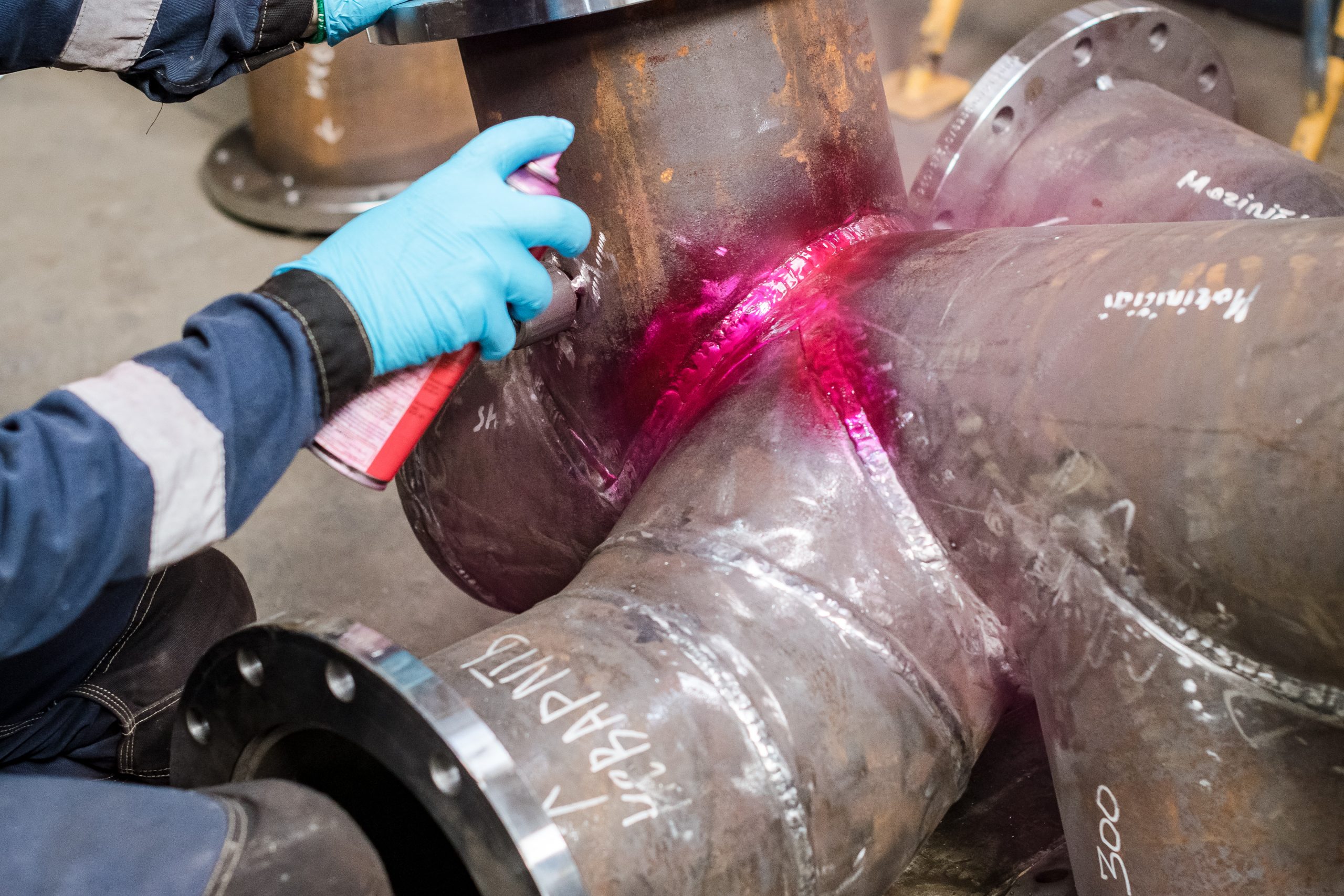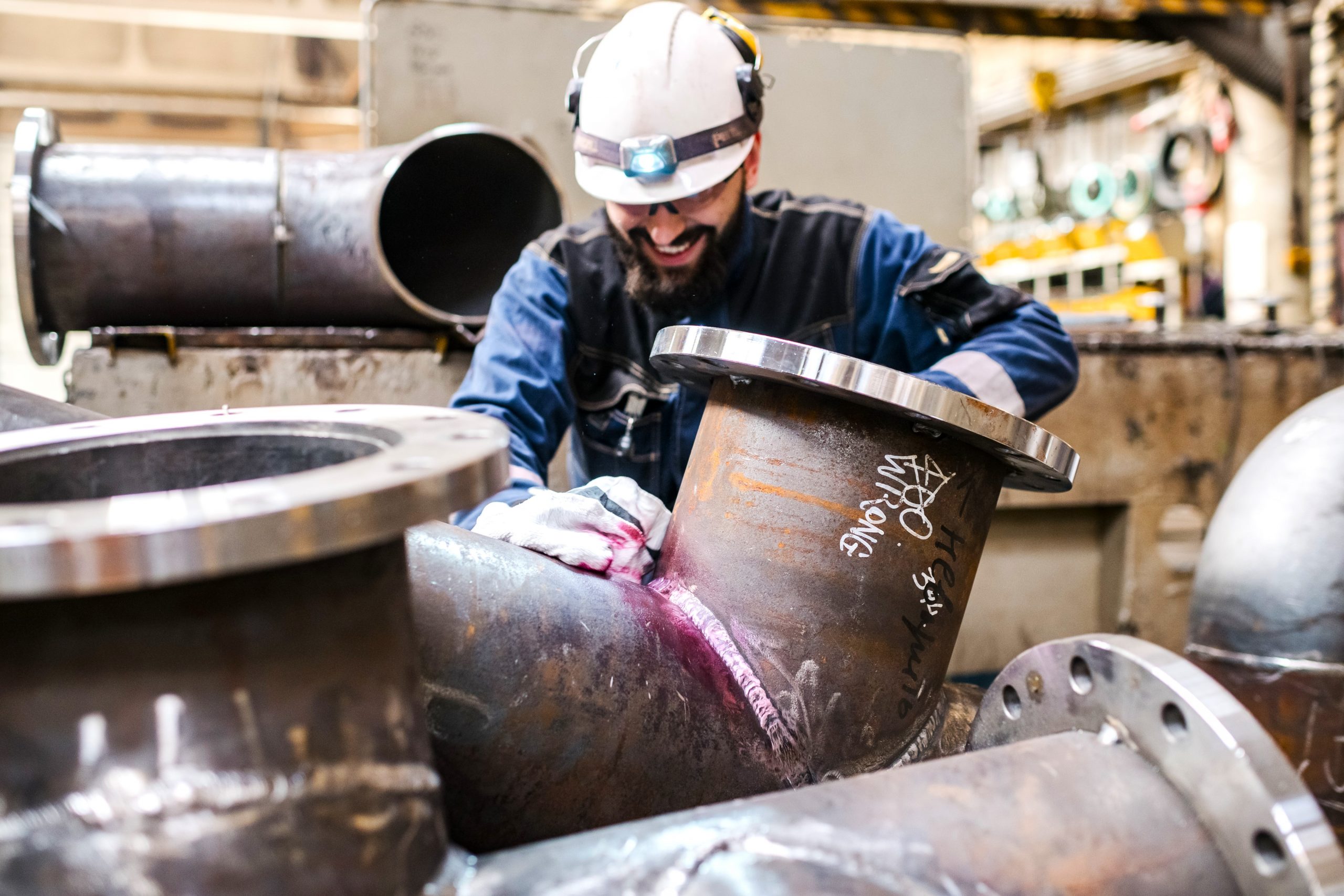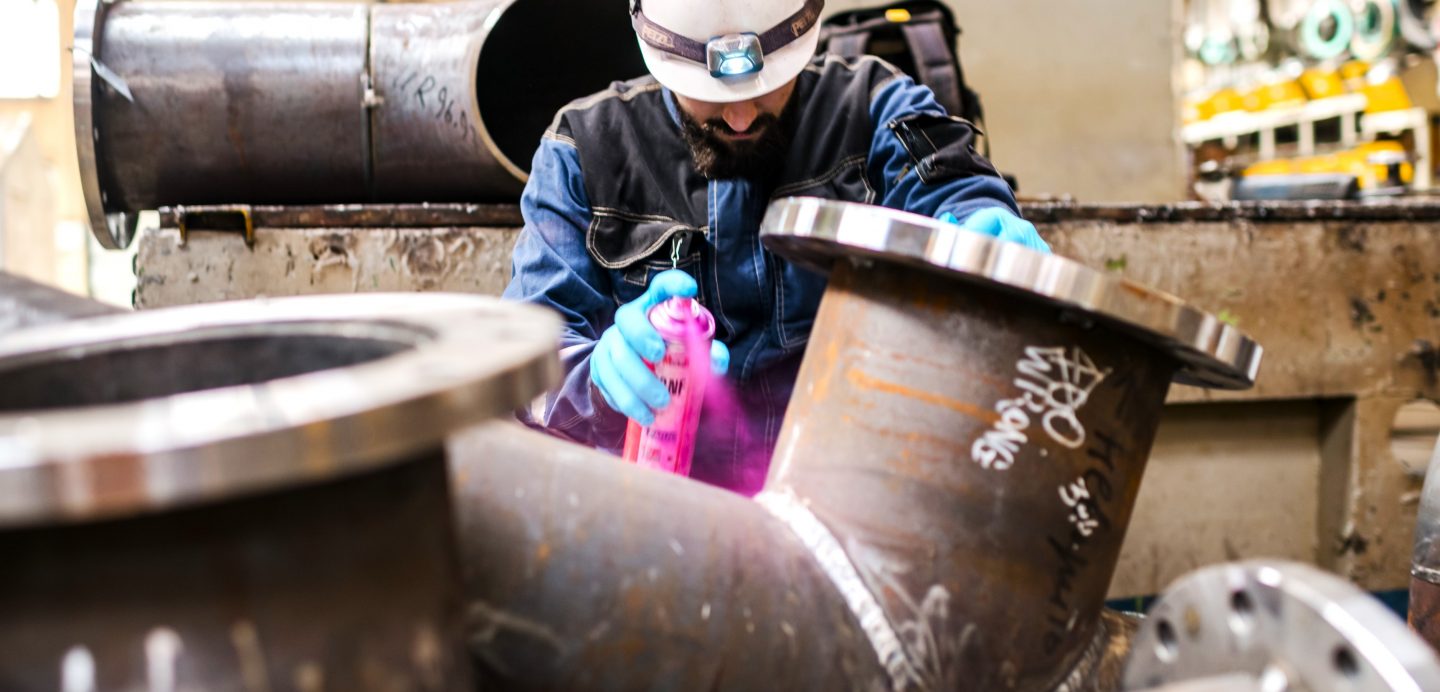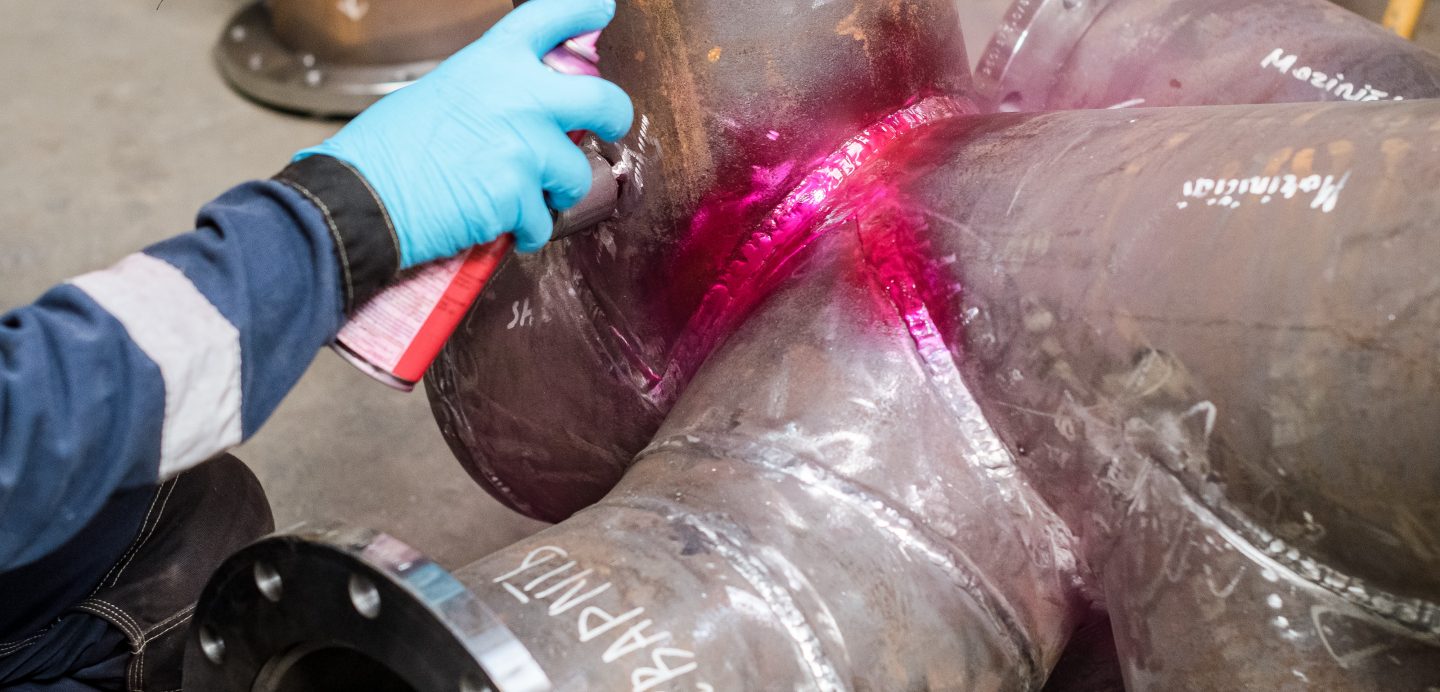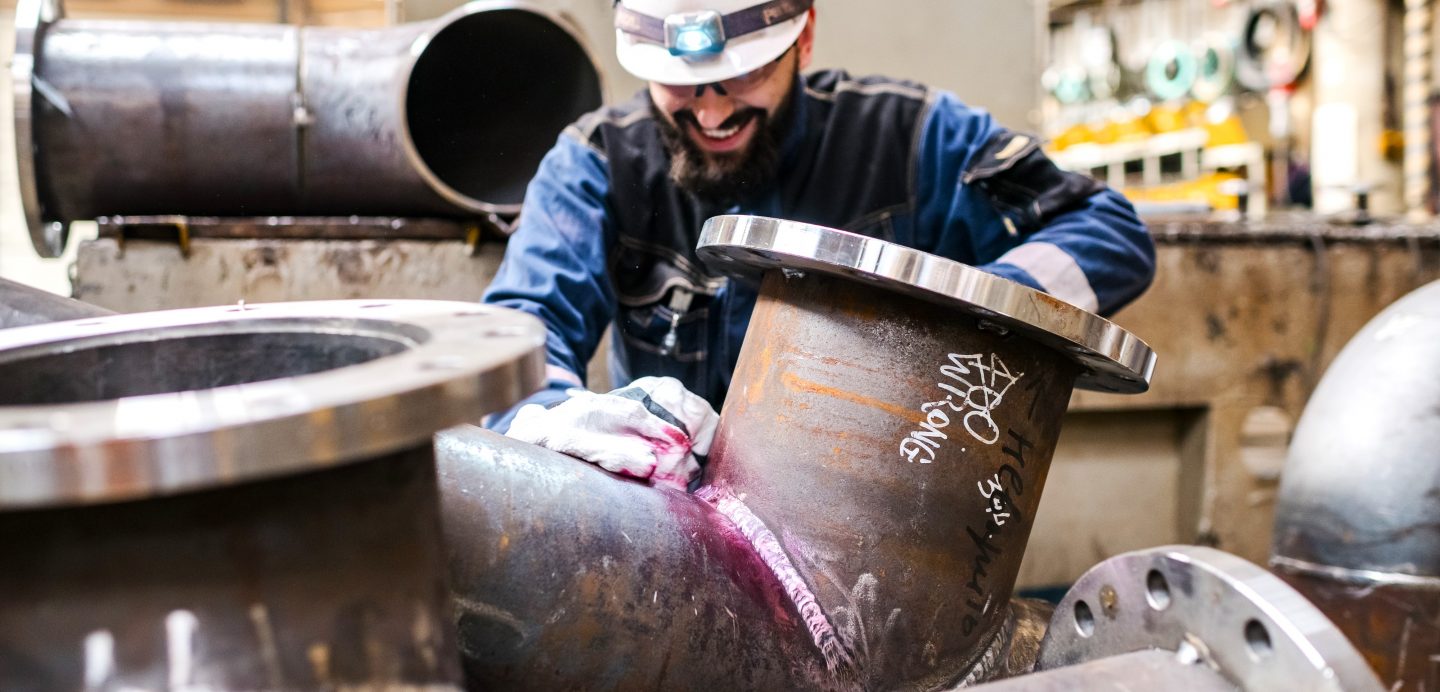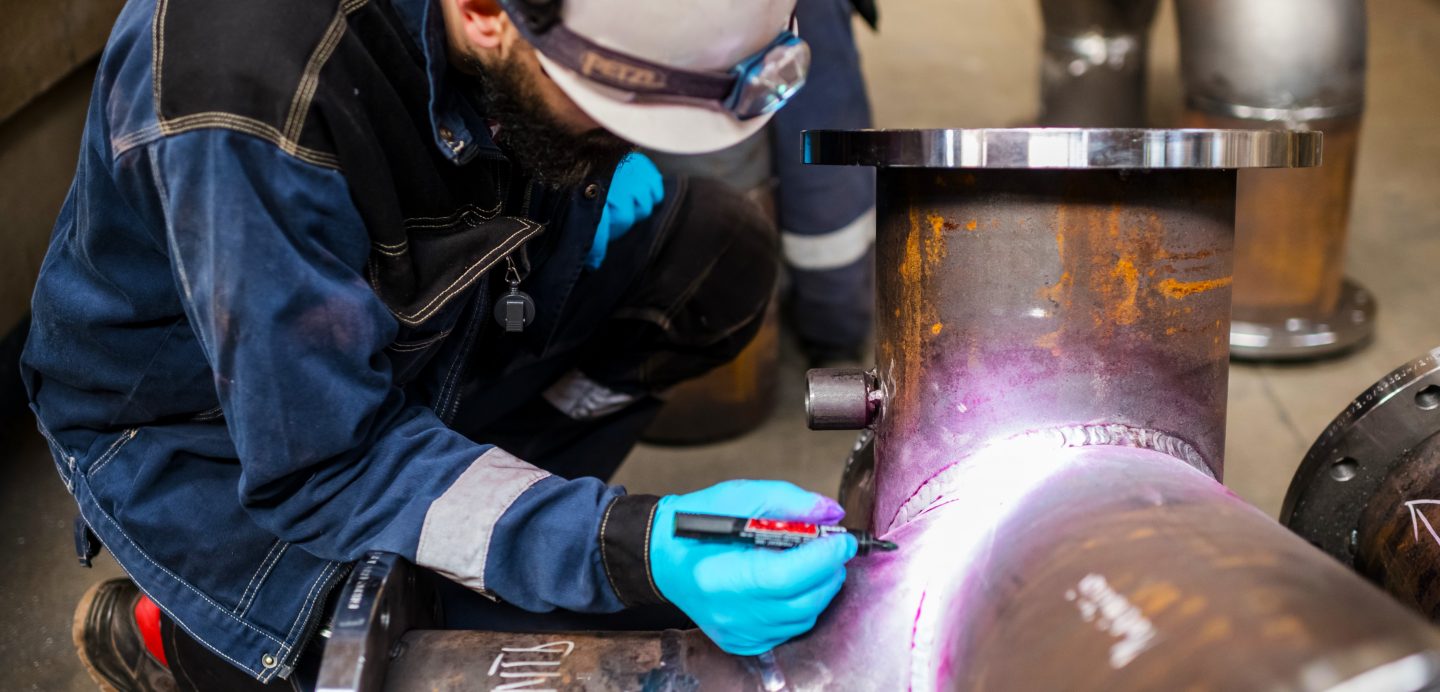Penetrant testing is a non-destructive testing method for the detection of surface defects designed for testing all (inactive) materials: steel alloys, aluminum alloys, stainless steel, copper alloys, nickel alloys, etc. This method is used when working with non-magnetic (non-ferromagnetic) materials and the application of the magnetic particle testing (MT) method is not possible. The penetrant testing method is also known as the liquid penetrant inspection and dye penetrant inspection.
Penetrant testing is based on the capillary penetrant of indicator fluids into the defective cavities of controlled surfaces. Cracks, cuts, gaps, and slag, lack of fusion, inadequate penetrant in welds, and other open defects on the surface can be identified using PT. This method helps to identify defects with lateral dimensions starting at 0.001mm. It is also used to detect cavity defects on the surfaces of ferrous and non-ferrous metals, alloys, ceramics, glass, etc.
Specialists of WESTERN CENTRAL LABORATORY conduct these tests using a variety of penetrants, including dyes and developers.

